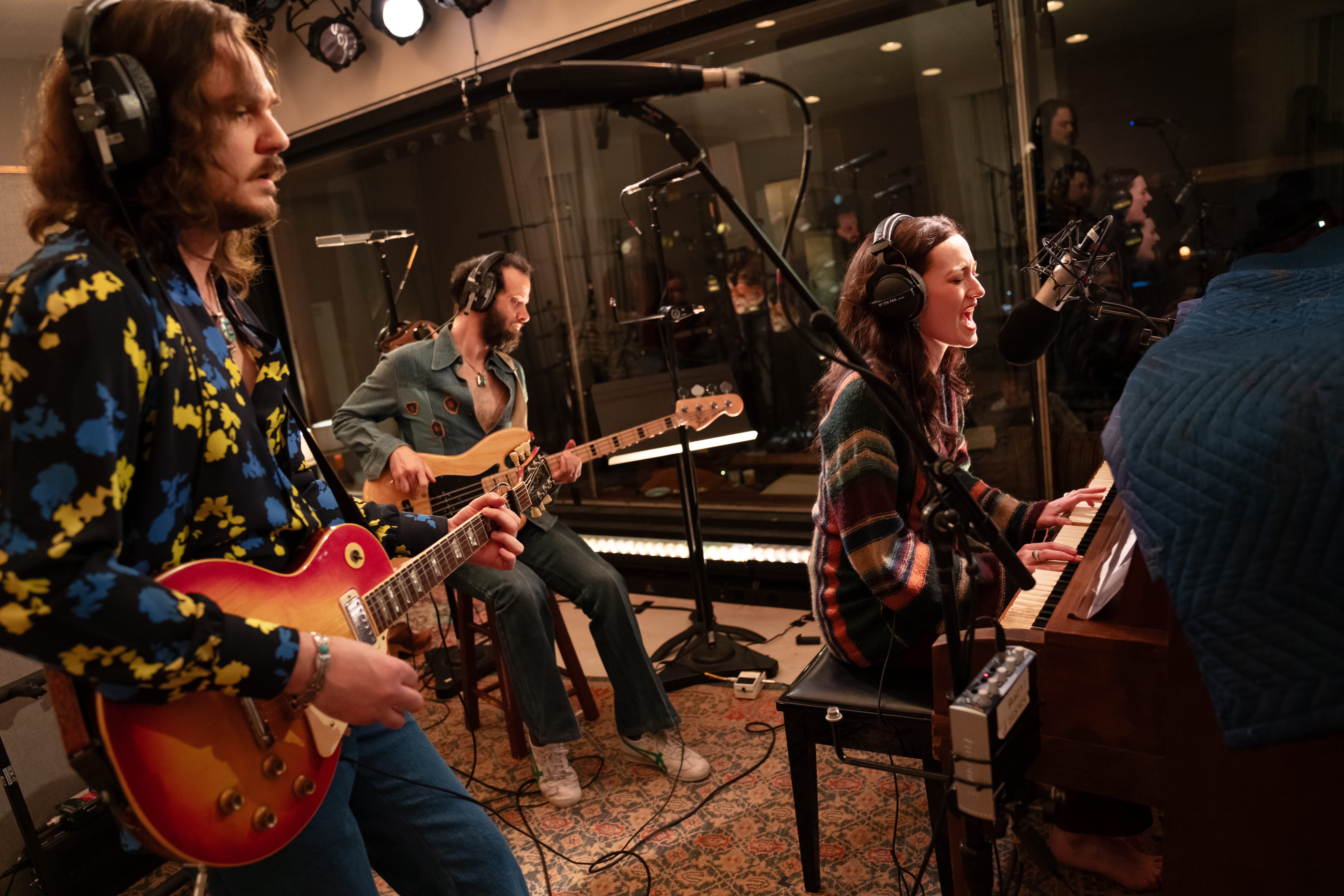MITF Roundup #1

(Photo © Jack Aaronson)
[Ed. Note: This is the first in a series of TM review roundups of shows in the sixth annual Midtown International Theater Festival.]
*****************
At the end of It’s Only a Play, Terrence McNally’s love/hate letter to the theater, one character says: “A play about an opening night party and theater people. Who cares?” McNally knows whereof he speaks. He used that subject matter for his ill-fated 1978 effort Broadway, Broadway, which closed out of town in Philadephia. The author then reworked that piece into It’s Only a Play, which was produced in 1985 at Manhattan Theater Club. Though the cast was headed by Christine Baranski, James Coco, David Garrison, and Joanna Gleason, that production didn’t fare much better.
Two decades later, there is presumably still a limited audience for a play populated by self-absorbed theater people. How many audience members will find names such as Gene Saks, Pina Bausch, and Lina Wertmuller recognizable? How many will think jokes about Lanford Wilson and the Talleys are hilarious? But if you’re in this category, you should attend the spirited revival of It’s Only a Play that’s being presented at the MITF.
The eight-member cast is remarkably solid and some of them are even better than that: Michael Baldwin is perfect as Gus, the fresh-off-the-bus actor/waiter; Frederick Hamilton is highly amusing as Peter, the neurotic playwright; Cynthia Henderson does quite well as Julia, the bubble-headed producer; and John Squire is spot-on as James, the rather bitter television star. Best of all is John Capo as the self-deprecating boy wonder director Frank Finger. (Maybe it’s typecasting; Capo is also the capable director of this production.)
In the end, McNally seems to have affection for all his characters, with the possible exception of the crusty critic Ira Drew (Charles Marti). There are also some nasty (and very funny) jibes at a whole bunch of 1980s theater pundits. But if the author doesn’t love us, I hold no grudges. After all, it’s only a play.
— B.S.L.
*****************
There are eight million stories in the Naked City but few as potentially tragic as the one told in 21 Stories: A Broadway Tale. In the elevator of the apartment building where they both live on the 21st floor, Billy meets Margaret. He’s an enthusiastic young man from Yorkshire, England who arrives in Manhattan with money inherited from his grandmother and dreams of becoming a Broadway dancer; she’s a young woman from Texas who moved to the Big Apple with $887 she stole from her ailing mother, the vain hope of finding her father, an addiction to Vicodin, and considerable talent as a pianist. The two become best friends, even soulmates, despite Billy’s sexual orientation, but they eventually come to an unhappy and unexpected end.
I say “potentially tragic” because G.W. Stevens, the show’s co-creator and co-star, has unfortunately stinted on character development. Billy is the better fleshed-out of the two, but it’s unclear why he can’t tell Margaret that he’s gay or why he remains for seven years in an unsatisfying relationship with Tom, a producer who can get him house seats but not a good job. Margaret is even less well defined; for example, does she really make enough of a living as a “perfume spritzer” at Bloomingdale’s to survive in New York City? It’s a testament to Stevens and actress Marilyn Rising — whom I’d like to see in another, much better show — that we care at all about these sad souls.
Stevens seems to have been more concerned with setting parts of this 80-minute two-acter to cuts from cast albums of shows of the 1970s and 1980s. This gimmick is most effective when used to illustrate the many Broadway shows that Billy sees during his time in NYC, but other times, it’s jarring if not downright bizarre. And I’m not sure I can forgive the way he uses Bernadette Peters’ recording “Look What Happened to Mabel,” one of my favorite show tunes. That’s my story, and I’m sticking to it.
— B.S.L.
*****************

By the end of Rob Lok’s Revolutionary Chickens, the stage is strewn with reams of paper and other debris — but that’s not the only thing here that’s a bit of a mess. The ambitious but flawed solo show is inspired by and partially based upon the escape of Lok’s own family from China during the Cultural Revolution (1966-1976), one of the most chaotic periods in that country’s history. Thousands of innocents were persecuted by the government for so-called “counter-revolutionary” activities; some of them were sent to re-education camps where they underwent forced labor.
Portions of Revolutionary Chickens are set in such a camp, which the show’s protagonist plots to escape with a fellow inmate played by a hand puppet. (Lok provides the voice.) The farcical acting style is a bold choice for such a serious subject but is only partially successful. A graduate of the Ringling Bros. and Barnum & Bailey Clown College, Lok is a dynamic physical performer who shows off his juggling, clowning, and slapstick skills during the course of the show. In one of Revolutionary Chicken‘s funniest moments, he engages in a knock-down, drag-out fight with the puppet on his left hand. Unfortunately, the writer/performer cannot sustain this kind of comic inventiveness; several of the show’s sequences grow tiresome due to repetition and/or a forced vocal delivery that eschews subtlety.
The disjointed narrative — which includes forays into mask work, multimedia presentations of a Survivor-like television program, and more — needs to be sharpened and streamlined. No director is listed in the program, which could be part of the problem. A dramaturg might also be of use. Lok bills the piece as “an ongoing work-in-progress,” so one hopes that its next incarnation will be more theatrically satisfying.
— D.B.
*****************
In Vincent Caruso’s dismal Leftovers, gay party boys Michael (Frank Stasio), Eric (Jack McGowan), and Joseph (Clay Drinko) meet in a club and return to Eric’s place for a three-way. Asserting that they are HIV-negative, they dispense with condoms during their sexual encounter. As Michael states later, “It’s funny how trust can develop after two hours and eight cocktails.”
The play follows the three men over the course of a little more than a year, showing how their friendships, animosities, and sexual relationships with each other develop and change. It tackles several issues of interest to the gay community, including the breakdown of safer sex practices, ageism, drug abuse, promiscuity, and much more. Sadly, it sheds no new light on such topics, using them instead as a substitute for substantial character development.
A prolonged game of strip poker is at the center of the play’s action. It’s a clumsy theatrical device that seems designed to reveal the vulnerabilities and pettiness of the characters while also fulfilling a certain voyeuristic expectation that afflicts so many gay-themed plays. Caruso’s dialogue is often clunky, incorporating pseudo-poetic passages, clichéd phrases, and awkwardly handled emotional declarations. Director James Martinelli is unable to overcome the limitations of the script; on the contrary, he rather heavy-handedly punches up the play’s melodramatic moments, particularly the climactic scene. None of the actors bring much depth to their portrayals and Stasio constantly flubs his lines, which certainly doesn’t help matters. When all is said and done, Leftovers leaves a bad taste in one’s mouth.
— D.B.











